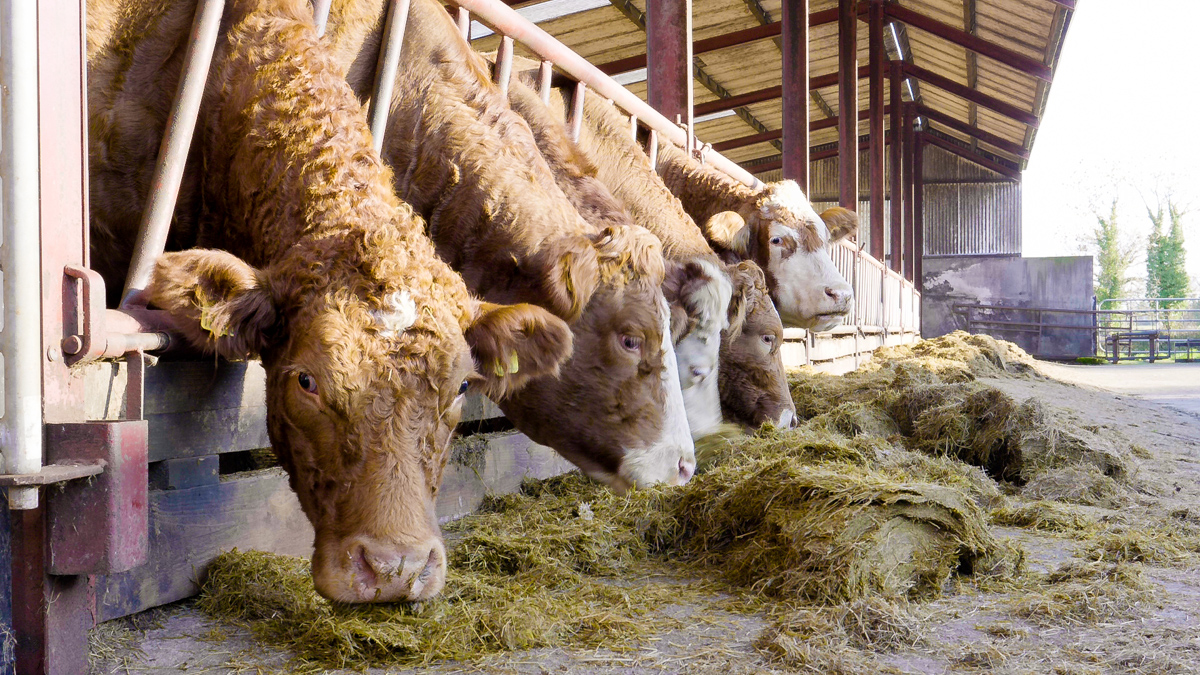Teagasc economists have gauged that the average family farm income (FFI) in Ireland increased by an estimated 7% in 2019, according to a new report.
The agriculture and food development authority has stated that a key driver of this increase has been a reduction in animal feed use on dairy, beef and sheep farms; as well as additional subsidy supports channelled to cattle producers to alleviate the effects of falling beef prices.
The Teagasc Outlook 2020, Economic Prospects for Agriculture, was published today, Tuesday, November 26, at the annual Teagasc Economic Outlook conference in Dublin.
Although farming in 2018 was dominated by unfavourable weather, Teagasc latest outlook has found that production conditions returned to normal in last year.
As such, this led to a substantial reduction in the amount that dairy, beef and sheep farmers spent on animal feed throughout 2019.
It found that there were also cost savings due to lower fertiliser use; as well as lower spending on silage production in 2019.
However, price increases for animal feed and fertiliser in 2019, partially offset the cost savings relating to lower input usage.
The African Swine Fever (ASF) outbreak in China has resulted in a sharp increase in international pig prices, including in Ireland, returning the Irish pig sector to profitability this year.
However, prices for milk, beef and sheep were all lower in Ireland in 2019 compared to 2018.
Marginal beef income rise
Looking across the sectors, the report states that average incomes on dairy farms have increased in 2019, benefitting from lower production costs and a further increase in milk production.
Again, by way of reminder, in 2018 the average dairy farm incomes fell by 31% to €61,273 – compared with the 2017 level of €88,829.
The report found that incomes on tillage farms in 2019 have fallen considerably, due to a sharp drop in cereal prices. (In 2018 the average income on tillage farms was €42,678 – an increase of 18% on the 2017 figure of €36,048.)
The latest outlook has been found that incomes on beef farms are up in 2019, largely due to the exceptional aid made available to offset falling beef prices in the fourth quarter of 2018 and the first quarter of 2019 and lower spending on inputs in 2019 as compared to 2018.
(Yet again, as a reminder, the average family farm income on cattle rearing farms dipped to an estimated €8,318 in 2018 – a reduction of 22% on the €10,642 in 2017. While average ‘cattle other’ farm income in 2018 was €14,408, a reduction of 11% on the 2017 figure of €16,115.)
Looking ahead to 2020, a further improvement in average family farm income is in prospect.
The expansion in Irish milk production is expected to continue.
The increase in fertiliser, and cattle and sheep feed prices in 2019, is set to reverse in 2020, leading to a slight drop in production costs across grassland and tillage farms.
While pig feed prices are set to rise slightly in 2020, this will be more than offset by a substantial increase in pig prices, due to the continued fallout from ASF in Asia.
Family farm income should increase in 2020 on dairy, tillage and sheep farms, with minor changes in income forecast for cattle farms.
Overall, the average family farm income is forecast to rise by 7% in 2020.
Wide disparity continues
That said, according to the report, a wide disparity in average income levels exists across the various farm types.
Dairy and tillage farms typically located in areas with superior soil and climatic conditions and are on average much larger than other farm types.
As a result, they continue to generate incomes that are substantially higher than beef and sheep farms.
The Teagasc Outlook 2020, Economic Prospects for Agriculture, is available to view here.
